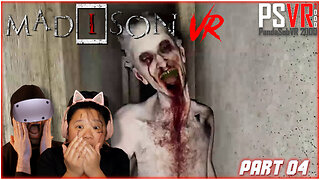Premium Only Content

Smart dressing tells you when a wound has healed.chronic wounds when they've healed.
Smart dressing tells you when a wound has healed.chronic wounds when they've healed.#medicalsolutions #innovation #technology #artificialintelligence #medical #university Innovation by James Dyson Award Warsaw University of Technology.
Here's how artificial intelligence is improving medical imaging.
MRI scans are expensive, and even dangerous for some patients like pregnant women or children.
A new AI-powered algorithm is helping abolish some challenges associated with medical scans, through a technology called 'virtual native enhancement'.
This new artificial intelligence technology could slash the time that patients need to spend in an MRI scanner from the standard 30-45 minutes to 15 minutes.
This can more than halve the scan cost while producing images that are clearer and easier to interpret.
Disruptive AI-based imaging technology might replace the injection of dye ‘contrast agents’ usually needed to show clear images of scar of the heart
Imagine you are a medical doctor, faced with a patient with suspected heart disease for symptoms such as chest pain, tightness, or shortness of breath. One way to find out what is happening, and help guide patient prognosis, is to do a cardiovascular MRI scan to look into any heart muscle abnormalities. The scan involves injecting a ‘contrast agent’ (a dye that will improve image contrast and show up scars on images) into a vein in the patient. Contrast-enhanced MRI has been the clinical standard to provide clear scar images, but it’s painful, and makes already expensive MRI scans even more so.
What’s more, this method is limited in patients with significant kidney failure – their kidneys have difficulty clearing the dye from their bodies, sometimes leading to irreversible complications. Some patients will be allergic to the contrast agent, and you might want to limit the use of injectable contrasts in some patients, such as pregnant women and children.
So how do you find out about what might be going on in your patient’s heart in that case, without injecting into the
-
 1:09:42
1:09:42
Mike Rowe
4 days agoHow Did THIS Dirty Job Make Tommy Mello A Billionaire?! | #447 | The Way I Heard It
67.9K20 -

SpartakusLIVE
10 hours agoThe BADDEST Duo in WZ Exhibits PEAK Physique || Duos w/ Sophiesnazz to start, quads later
165K1 -
 2:49:37
2:49:37
RattlesnakeTV
21 hours ago $0.29 earnedLIVE DEBATE! Lord Jake vs Crazy Feminist
27K12 -
 4:00:42
4:00:42
Badlands Media
13 hours agoThe Narrative Ep. 35: Codex of Truth
92.9K45 -
 3:55:56
3:55:56
Due Dissidence
16 hours agoSchmuley TRASHES Shapiro, Maxwell Sings For Pardon, Uhuru Doc Preview - Live From St. Louis!
48.3K45 -
 LIVE
LIVE
Lofi Girl
2 years agolofi hip hop radio 📚 - beats to relax/study to
400 watching -
 2:23:21
2:23:21
PandaSub2000
5 days agoMadison VR (Part 4) | PSVR 2000 (Original Live Version)
27.5K2 -
 2:34:32
2:34:32
Badlands Media
5 days agoCODEX 9/11
309K268 -
 1:53:43
1:53:43
Nerdrotic
10 hours ago $0.36 earnedMysteries of 3I/ATLAS | Forbidden Frontier #113
62.9K5 -
 2:04:21
2:04:21
vivafrei
1 day agoEp. 278: D.C. Peace Wave! Big Tish & Nipple Judge SPANKED! "Maryland Man" Trafficker FREE & MORE?
120K142